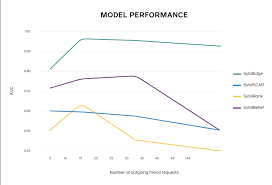Facebook has outlined its latest advancement in the early detection and removal of fake profiles, this time through the use of data related to friend requests, and the variance in friend request rejection between real people and fake profiles.
As explained by Facebook:
“Online social networks are frequently targeted by malicious actors who create fake accounts for the purpose of carrying out abuse. Broadly, abuse is conducted in three phases. First, malicious actors create accounts. Then, these accounts need to establish connections with real users (e.g., by sending friend requests on Facebook). Finally, once they establish a sufficient number of connections, fake accounts can expose their social networks to a variety of malicious activities and abuse.”
In essence, fake accounts need to establish enough connections in order to have any real impact, so they need to send out a lot of friend requests early to gain that traction. But these days, most Facebook users are increasingly wary of random friend requests, which means that, as a result, requests from fake profiles get rejected at a much higher rate than those from people you know.
Facebook found that it can map this behavior, giving it a baseline data point for rejections of likely fake accounts.
Based on this finding, Facebook explored further and found that, in several variations of the model, that it is possible to create a baseline algorithm that can raise the alarm about likely fake profiles based on such behavior.
There are several variants, however – for example:
“An intuitive behavior that we observed in data is that fake accounts oftentimes are careful when picking their friend request targets, most likely to maximize the probability of their requests being accepted.”
So fake profile creators will target users who are more likely to accept friend requests from anybody. Facebook’s algorithm can track that too, taking into account the rate of friend acceptance for an account, and cross-matching that against new profile activity, relative to other actions.
The end result is a new process, which Facebook calls SybilEdge, which is able to detect and highlight likely fake profiles at a much higher rate.
It’s a fairly logical approach to fake account detection, but the fact that Facebook has been able to build an algorithm around such behaviors is significant. There are variations in how these accounts act, and the creators are always getting smarter, but there will always be patterns in some form. Keeping tabs on such could significantly improve Facebook’s capacity to pick out fake accounts earlier in their creation process.
This is a key area of focus for the platform – while Facebook has made significant advances of late in detecting and removing fake profiles from its platform, fake accounts still remain a significant problem on The Social Network.
Last year, as part of its regular Transparency Reportage, Facebook provided an overview of its enhanced action in removing fake accounts, noting that it removed more than 5.4 billion fake accounts in the first three quarters of 2019, up from 3.8 billion in total in 2018.
Still, even with this increased removal activity, Facebook estimates that around 5% of its user base is made up of fake profiles. At 2.5 billion users, that means that there are still some 125 million active fake profiles on the platform at present.
That might never be fully solved – given the value that organizations can glean from creating and utilizing fake accounts, in various means, there will always be developers working on new ways to circumvent Facebook’s systems and add fake accounts to the app. Maybe, 5% is the best that can be done. 125 million seems like a lot, but again, at Facebook’s scale, it’s a small fraction, likely with little influence.
Yet, at the same time, ‘influence’ in this respect is relative. Sure, at those numbers, you’d think that the capacity for fake profiles to sway political shifts would be minor, but they may still be able to swindle users with scams, amplify click-bait scams which add malware to user devices, or provide thousands of followers to fake ‘influencers’ looking to present themselves as something that they’re not.
In any capacity, fake profiles remain problematic, which is why it’s good to see Facebook exploring new ways to detect and remove such from the platform.
